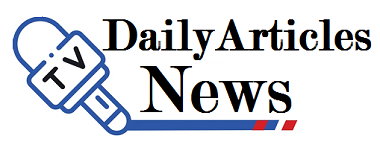Adopted technology has made remote team management an integral practice in modern business because firms want to take advantage of a global talent pool. However, every new challenge comes with an opportunity. The distributed nature of remote work means managers face productivity, communication, and coordination challenges. To formulate a great remote work strategy, businesses should align the correct tools and software, like Controlio time tracking software.
Table of Contents
Barriers to Remote Team Management
As effective as remote work might seem, it requires a different approach to problem-solving. One of the most common barriers to overcome is employee communication. Without physical interactions, misunderstandings lead to unproductive outcomes. Relying on self-governance poses problems too. Working alone creates silos that obstruct visibility, making it challenging to measure results. Communication becomes an even more daunting task due to disparate time zones.
Even more challenging is to preserve a strong organizational culture. This quality becomes incredibly important when in a remote work setting, as companies need to motivate and align employees to achieve goals. Conversely, the right strategy gives companies the opportunity to achieve the highest productivity levels they never imagined.
Main Approaches of Managing Remote Teams
Guess what? Remote work has become a norm nowadays, and people want to do it from their homes. To maximize output from a remote team, a leader needs to manage with added levels of trust, communication, and structure. Here are some strategy approaches pertaining to remote work:
- Manage Communication Routinely:Make it a habit to get along with your team members either through weekly team meetings or one-on-one sessions. Over video call, team members can easily address any misalignment.
- Strong Culture Builders:Foster relationships by conducting fun online team building, such as online games or virtual coffee chats. This way, a sense of community and closeness is built.
- Flexible Schedule Encouragement:Strike a balance by meeting set deadlines, giving team members the freedom to accomplish tasks during their most productive hours.
- Technology Cortisol:Make use of technology and software to encourage workflow smoothing. Unlike micromanagement, software assists in observing performance.
- Team Monitoring Software:They aid in monitoring time usage, making resource allocation easy by seeing where employees place their time during work hours.
Adhering to these strategies, a business can construct and maintain an agile and supportive working environment.
The Importance of Time Tracking
Efficient use of time remains a challenge in remote team management. The Controlio app, like other time-monitoring software, helps managers understand how long tasks take, where delays occur, and how resources can be best used. Such tools give managers reports detailing employee activity and time usage on specific projects or applications, which help to make decisions regarding productivity improvements.
These tools allow employees to view their time logs, which enforces personal accountability. With an improved self-management regimen, employees are able to accomplish more. In remote contexts where traditional supervision is difficult, managers can have greater confidence and control knowing that time data can be relied upon to ensure that projects are on schedule and resources are being effectively utilized.
Advantages of Flexible Management Approaches for Remote Teams
Remote teams function best when paired with a properly tuned management framework. In this case, the benefits extend beyond optimal productivity. Employees feel trusted, which boosts their morale. Businesses can hire employees from any location, and structured remote work allows organizations to draw from a global talent pool. Such diversity can be experienced as a source of innovation, giving companies a competitive edge.
Moreover, managing from a distance efficiently allows businesses to lower operational costs. Reducing the necessity for traditional office spaces and adopting flexible schedules frees up budgets for other important areas like employee development or technology. Moreover, time management software reveals inefficiencies, which aid in better resource allocation to save costs.
Addressing Common Concerns
Regardless of the tools or strategies in place to aid remote work, managers still need to address potential issues like employee privacy and work-life balance. For maintaining trust, businesses must outline how time-tracking software, for example, will be monitored and assure employees that only work time will be focused on. Policies that restrict communication outside of office hours help maintain personal time and are essential.
Equally important is training empathy for remote teams to managers. Leaders are willing to give freedom to employees to choose when to work but focus on achieving defined goals, in turn building a better balance-focused workplace culture. Accompanying these initiatives with regular feedback coupled with employee recognition improves employees’ experience while working remotely.
Conclusion
Balancing communication, planning, and technology is crucial when it comes to managing remote teams. The Controlio app enables businesses to track time, optimize workflows, and encourage responsibility in a manner that supports diversity and inclusivity in the workplace. By tackling issues and focusing on engaging employees, companies can maximize their remote workforce’s potential. Regardless of whether you are managing a small team or a global organization, these suggestions will help you enhance productivity and connectivity in the remote workforce of the future.
